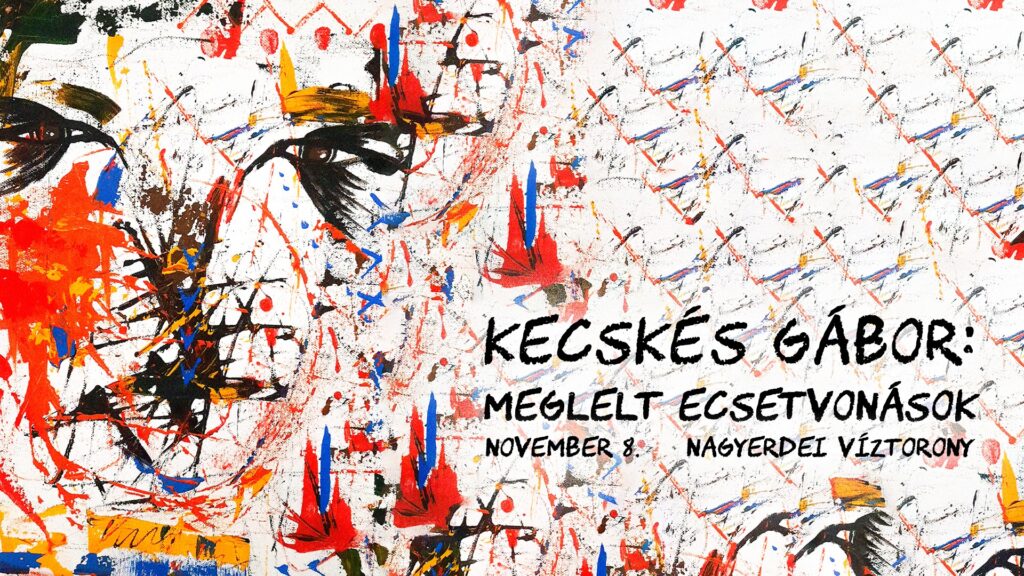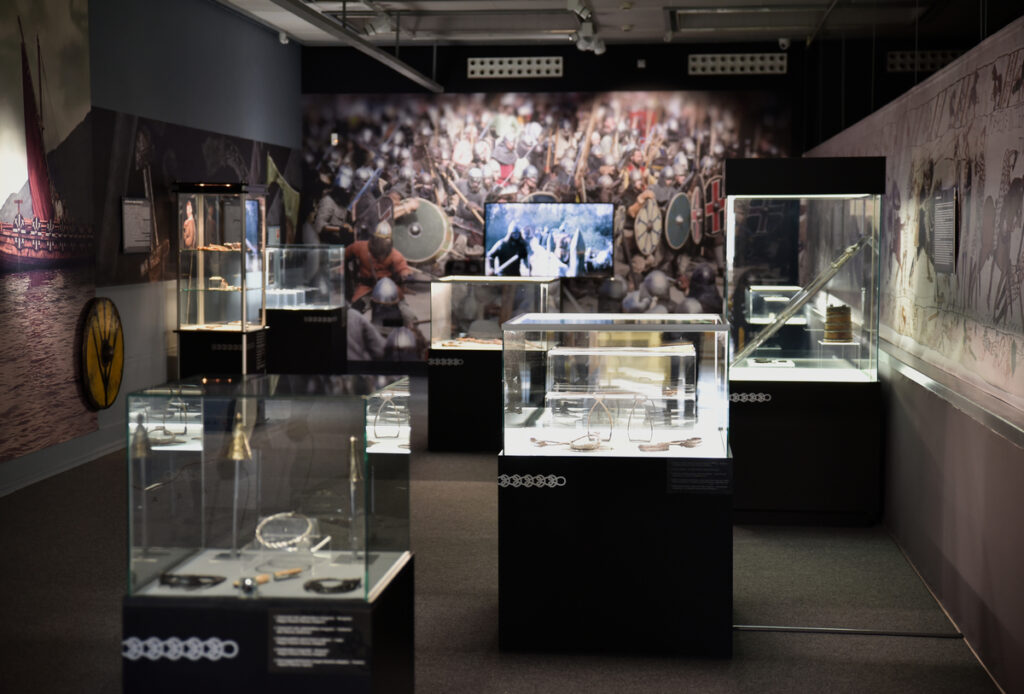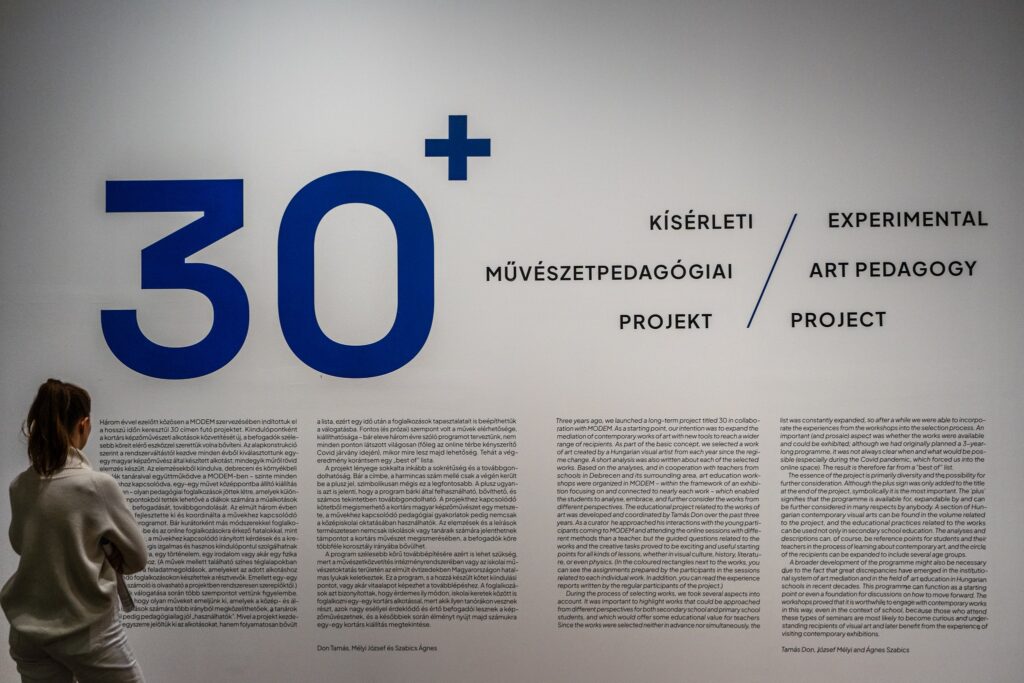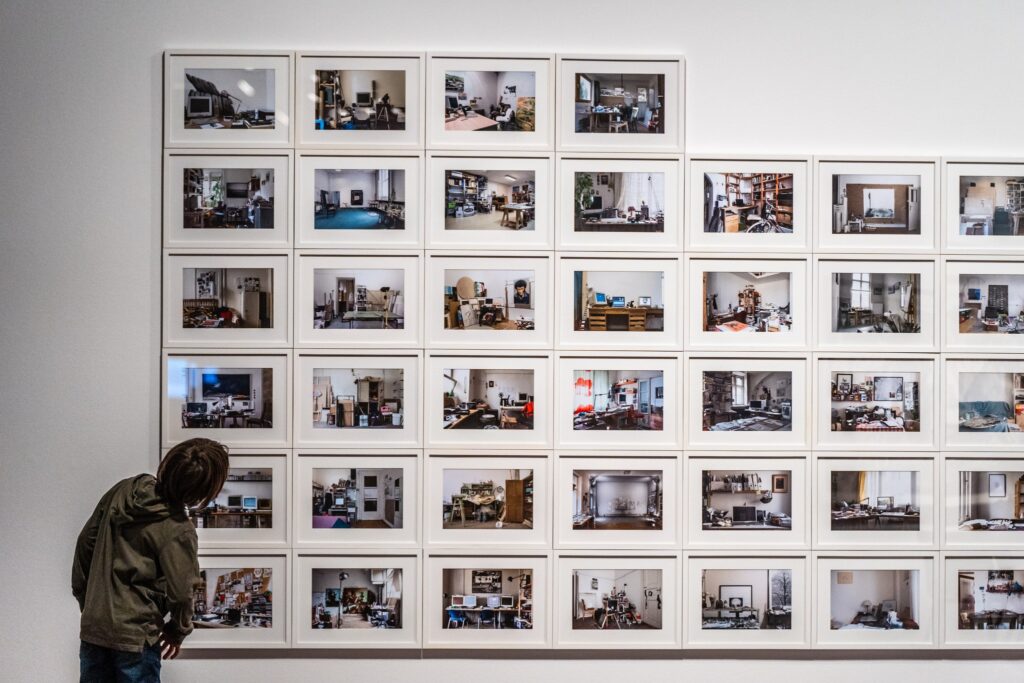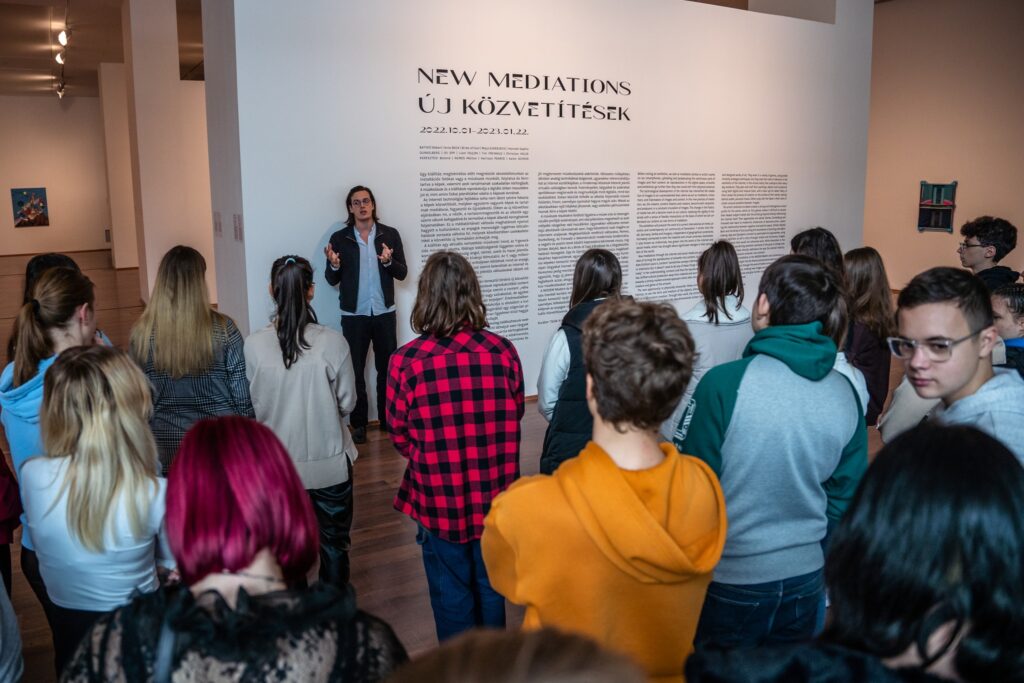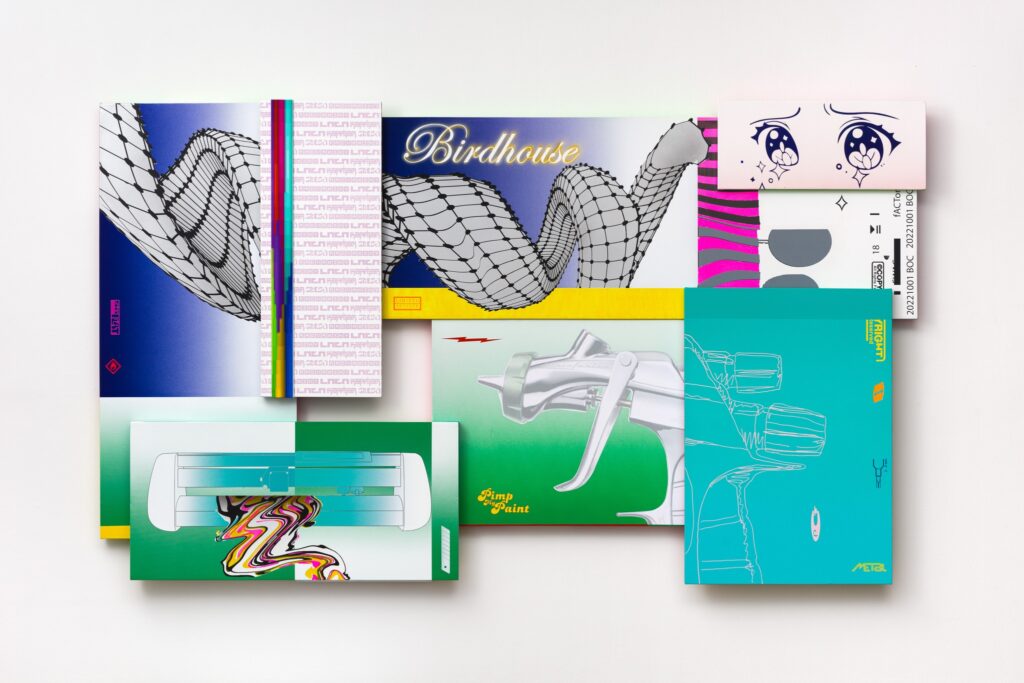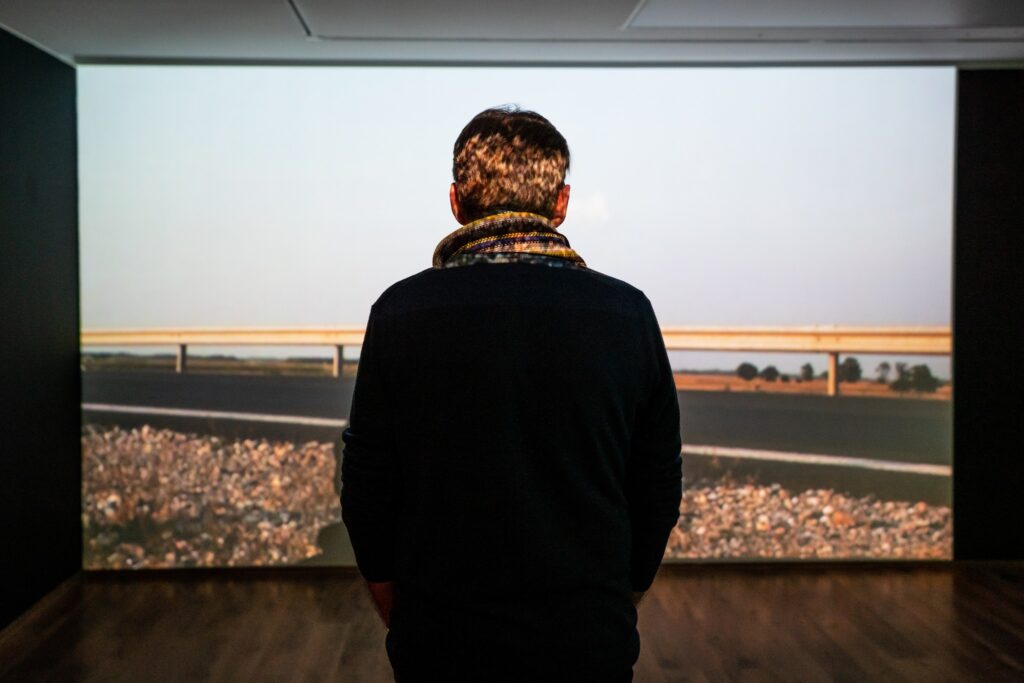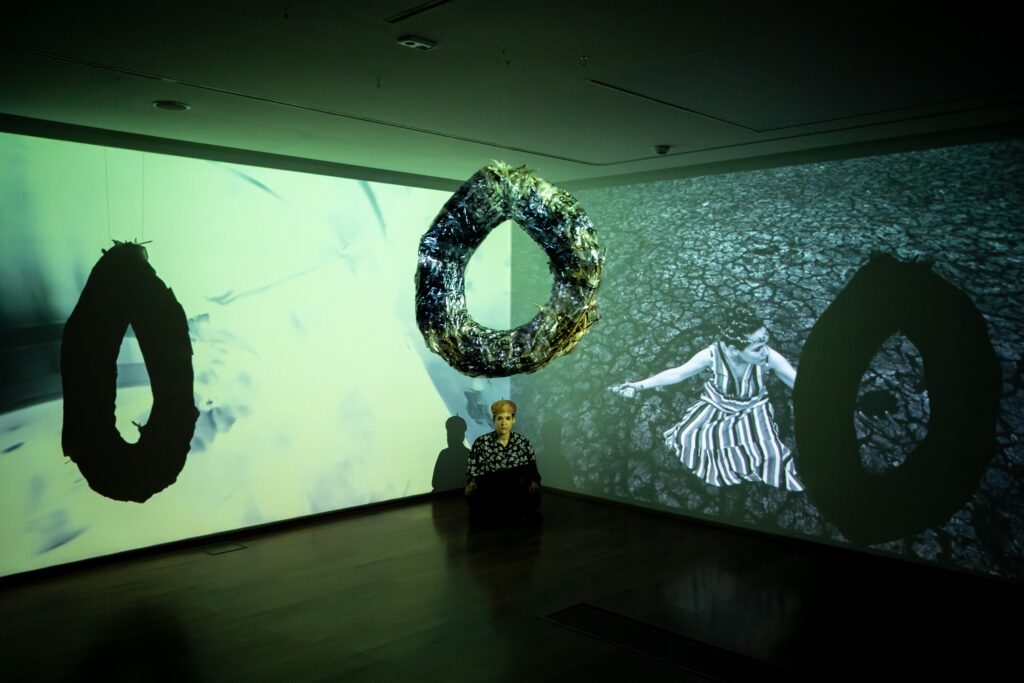New exhibitions are opening in Debrecen’s museums and art galleries, presenting a diverse range of both genres and themes, so everyone can find something of interest.
We recommend these exhibitions for cool autumn days.
Vikings in the Carptahian Basin
The Nemija helmet and group or Hungary’s 10th-11th century Scandinavian and Russian relations in the light of archeological findings
Where: Déri Museum
When: October 28, 2022 – May 7, 2023
The Vikings and Debrecen?
It was less than two years ago that the city of Debrecen unveiled the statue of King St Stephen on Dósa Nádor Square. The contemporary work depicts the king with a spear in one hand and a sword in the other. Research has long since established that the latter object was a Viking weapon and is rightly considered part of the memory of the former Hungarian king. However, Debrecen hides more treasures than just this public statue, which relates to the early centuries of Hungarian history and the Vikings. And the keeper of these treasures is the museum that bears the name of Frigyes Déri.
It is here that an early Russian helmet, once found in Nemiya, survived world burnings and regime changes and remains one of the rare relics of the skill of medieval Nordic craftsmen. In addition to the helmets, rich sites such as the 10th-11th century cemeteries of Pyspökladány, Sárrétudvar, Hajdúszoboszló and ártánd in Hajdú-Bihar county have also helped to investigate early Hungarian and Scandinavian relations. Without these sites, we would certainly know less about the early Hungarians and their connections across Europe. The Déri Museum, however, not only preserves and guards these magnificent treasures but also offers insights into them to the interested public.
A good example of this is the current exhibition, where many of our country’s outstanding collections (19 lending institutions!) have donated their treasures to be displayed at the Déri Museum alongside the antiquities of our region.
We can see with our own eyes all that others think they have seen through books, immerse ourselves in the beauty of the objects, reflect on the
and wonder what must have been in the minds of those who made, wore, and used these intricate weapons, tools, and jewellery.
More details: https://www.derimuzeum.hu/kiallitasok.php?id=7
“RETROSPECT” – Lifetime exhibition of sculptor Rigasz Hondromatidisz
Venue: Bényi Gallery, Kölcsey Center
When: November 3-24, 2022
“In his art, he respects tradition, insofar as he builds on the three-thousand-year-old Greek plastic traditions. At the same time, his vision of form is modern: he adapts his ideas, thoughts, and emotions to the new visual forms of the era. He expresses only the most important features in his figures and stays away from naturalistic depictions. His sculptures show a permanence that expresses some kind of content essence. All the work of a closed, independent world, the summation of something that is difficult to express in words, radiates from within. His figures have dignity and beauty, in the noblest sense of the word.” – Eszter Láng
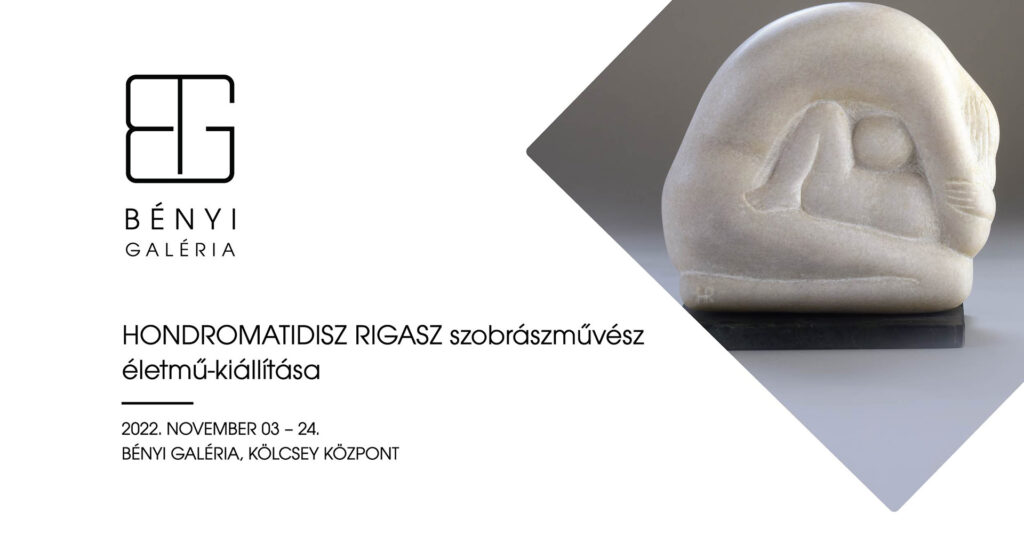
Részletek: https://www.facebook.com/events/804355807561788
30+ – Experimental Art Education Project
Three Decades of Hungarian Art Through the Eyes of Secondary School Students
Wheree: MODEM
When: October 24, 2022 – February 12, 2023
MODEM’s experimental art education project, launched in 2019, will come to an end this October. As a final chord, the exhibition will be on show from 24th October 2022 to 12th February 2023, presenting the Hungarian contemporary art world of the last 30 years since the fall of communism in a unique way. The exhibition is curated by Tamás Don, József Mélyi, and Ágnes Szabics.
Launched in 2019, the project aimed to introduce Hungarian art of the last three decades to high school students in particular. The curators selected a work of art from each year of the period between 1989 and 2020 by a Hungarian artist, which was then analysed by art historians and theorists, in collaboration with museum educators and secondary school teachers, in a comprehensive way. The works were exhibited by MODEM for a month or two – each exhibition was accompanied by museum education exercises based on the texts.
In the spring of 2020, the project was opened up to high school students, university students, and even adults from other parts of the country, and in December 2020, MODEM won the Ludwig Museum Arttransfer Prize for its online sessions.
The project will conclude with a compendium exhibition in October 2022, the publication of which will include the analyses and exercises for the works.
Details: https://www.modemart.hu/kiallitas/30
New Mediations – International exhibition of Generation Y artists
Where: MODEM
When: October 1, 2022 – January 22, 2023
Before visiting an exhibition, we will look at installation photos or artists’ works on our smartphones, continuing and maintaining the continuous cycle of images and their contents. The reproduction of artworks and exhibitions in digital space goes further than they could ever go with their physical presence.
The technological development of the Internet has intensified the mediation of images to an unprecedented level, where we are mediators, consumers, and (re)creators of images and content. In this new process of mediation, we, the viewers, the content sharers, and the creators, become both recipients and producers in a constant circulation of images. This media-historical change has left a decisive mark on our culture, replacing the rigidity of materials with a series of flexible interactions, as a result of which our actions can be understood as new forms of mediation.
The exhibition aims to present the work of significant representatives of a current international art trend, the online and contemporary art community of Generation Y artists from the UK, Germany, Serbia, and Hungary, independent of geographical boundaries. Strongly connected to both the material and virtual universe, Generation Y, or millennials, have literally grown into the world of the internet and social media, which has brought about significant changes in their perception of the world.
As part of the process of new mediation through the internet and social media, reproductions of artworks become content. Media scholar Kate Eichhorn defines content as “sometimes conveying information, telling a story or entertaining, but it doesn’t need to do either to spread effectively”. In her interpretation, content, and therefore the reproduction of artworks, has shifted from material and aesthetic categories of cultural production to a strictly market-oriented approach that often ignores the form, medium, and genre of the artwork.
The rare opportunity to physically encounter these works of art in an exhibition, and to see the form and medium of these objects up close, allows us to break the cycle of content production. Through their artworks, the artists have re-materialised their impressions of the two-dimensional flat screen, transforming them into crafted and well-designed works of art. They work in a variety of genres, using predominantly analogue techniques, while at the same time seeking their reference network in the aesthetics of the Internet, the virtual reality that underpins their everyday existence. Their paintings, objects, and sculptures are meticulously designed and crafted using both digital and hand tools. Many of them reveal the process of creation on the surface of their works, leaving behind subtle, personal traces. Others play with the flaws in their work or create unusual parallels between images.
The artist’s attention to detail results in a strong and heterogeneous visual profile of the works, which at first glance makes it difficult to access their deeper layers. At the same time, however, their works go beyond a direct reference to the Internet itself in their choice of subject matter. Their approach is extremely varied, with Nemes, Dunkelberg, and Freiwald looking back to modernist tendencies in deconstruction and the relationship between negative and positive spaces, while Scheer, Batykó, Beck, and Birds of Cool push the boundaries of painting and object making. Epp and Djodjevic relate to the postmodernist approach, using simple signifiers to tell a story through humorous images. Pearce and Fallon create objects that would not otherwise exist, while Keresztesi creates montages that combine aesthetic elements of the past to convey new meaning. Finally, Holze deals directly with the way in which the culture industry attempts to transform classical artworks into content.
A new international exhibition at the MODEM Centre for Modern and Contemporary Art offers an insight into the diverse, personal exploration of Internet aesthetics through the work of twelve contemporary artists and a group of four artists, creating new images and forms that break out of the rigidity of materials, giving further space to mediations of the real and the virtual.
Details: https://www.modemart.hu/kiallitas/uj-kozvetitesek
Time
Exhibition of Debrecen Artist in Residence
Where: MODEM
When: November 12, 2022 – January 1, 2023
How does art exist in time, relate to time, and how does time affect art?
This year’s program series of the Debrecen Artist in Residence, which has been operating since 2006, is organized around these questions. The DAIR prioritizes the cooperation and the exchange of ideas between Hungarian and international artists, promotes collective creative activity, while providing insight to the thematically organized professional work for a broader audience. During the two-week-long camp, the invited artists and presenters will seek answers to questions such as: what are the possible temporal aspects of art? How art, the creative process, and the artefacts themselves are exposed to time? In a material sense, what is the lifespan of an artefact? How an artwork, which already has a temporal character, can reflect on the passage of time, and how our interpretational strategies change over time? The twelve-day-long workshop results in a conference and an exhibition, and provides other activities too for the public free of charge.
Members of DAIR 2022: Csontó Lajos / Horányi Attila / Süli-Zakar Szabolcs / Benczúr Emese / Bilak Krystyna / Birkás Mona / Csörgő Attila / Donka Péter / Farkas Dénes / Koronczi Endre / Ladányi-Tóth Miklós / Tóth Kinga / Várhelyi Judit
Artistic Directors:
Horányi Attila, Csontó Lajos, Süli-Zakar Szabolcs
Details: https://www.modemart.hu/en/kiallitas/ido/
Healing embrace – exhibition by Mária Mihály-Tóth, drawing teacher and art therapist
Where: DEMKI Youth House Debrecen
When: November 3-30, 2022
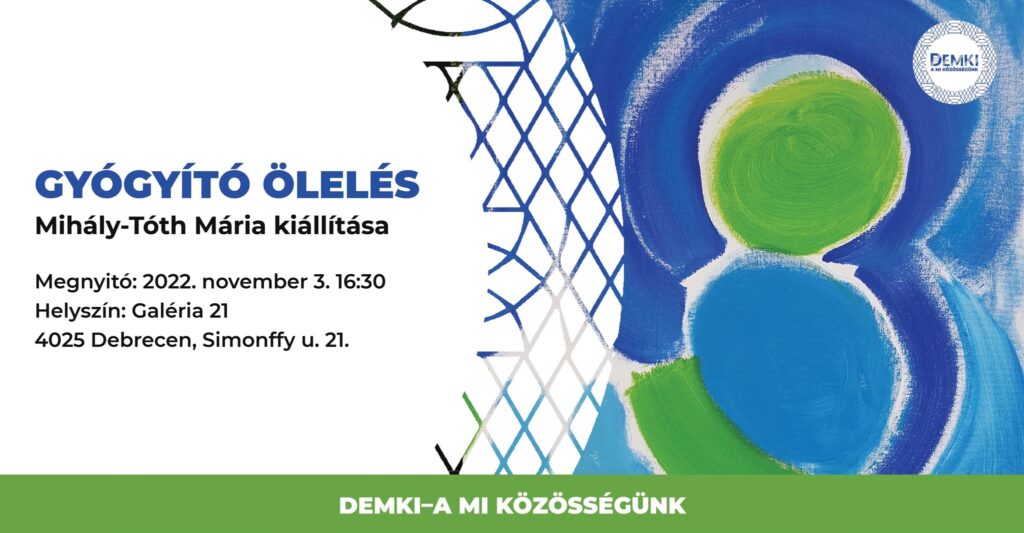
Details: https://www.facebook.com/events/1645507579177066
Found brushstrokes – Gábor Kecskés exhibition
Where: Nagyerdei Water Tower
When: from November 8, 2022
